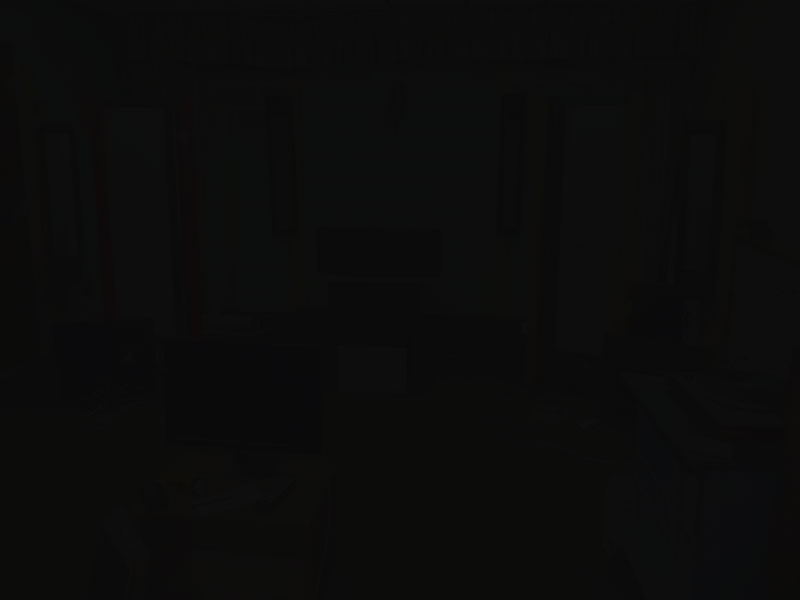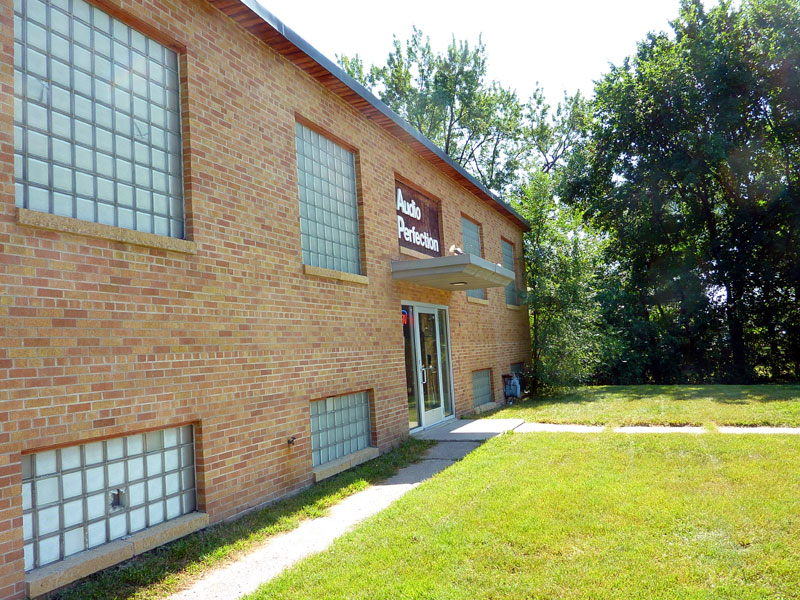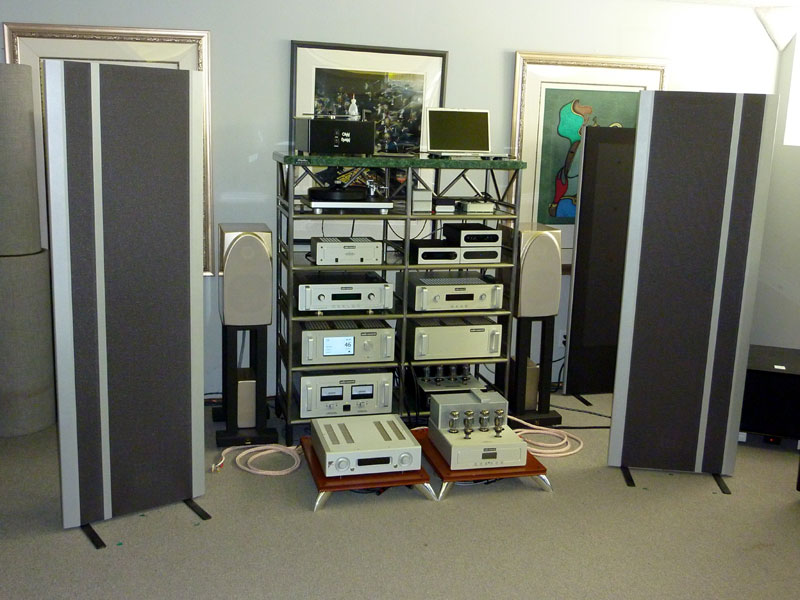First Sounds: The Mystery Maggie
aybe I'm a slow learner, but I've just now realized something that has probably been recognizable, if not obvious, for a few years: Whenever I visit Magnepan, which generally happens at least once a year, I'm there as a guinea pig. Wendell Diller seems genetically programmed never to conduct a run-of-the-mill demo, one that simply shows off a new pair of speakers in Magnepan's purpose-built listening room. Instead, he relies on subterfuge to challenge expectations, often leading me into a completely dark room to hear any number of new or existing speakers in unconventional configurations.
The view from the listening seat in Magnepan's demo room. There's something out there, but what? My latest visit to Maggie HQ took this to a new level. I was once again led into a pitch-black room and played a number of demo cuts, followed by choices from my collection of demo CD-Rs. Normally, after listening, Wendell turns on the lights to reveal what I've been hearing, but not this time. After the lights-out session, I was led out of the room. I immediately drove to Magnepan's Minneapolis dealer, Audio Perfection, in order to hear the 3.7s ($5495 or $5895 per pair, depending on trim option). The idea, as Wendell explained, was to compare what I had just heard -- which presumably was not 3.7s -- with a completely different system featuring the speakers that are Magnepan's penultimate reference, second in the line only to the 20.7s.
Audio Perfection is Minneapolis's largest high-end dealer, handling many of the hometown brands, including Audio Research and Atma-Sphere. It is nearly bursting at the seams with audio gear, the demo rooms featuring an abundance of speakers and electronics -- enough for multiple complete systems. Knowing that I was coming, the staff made sure the 3.7s were connected and the system, which liberally featured Audio Research electronics, was warmed up. I'm always a little wary of what I hear while listening in the dark. I concentrate differently when the lights are out, and I can be more prone to exaggerating my thoughts about what I'm hearing. However, I've done this sort of listening enough at Magnepan to adjust before my behind hit the seat. The soundstage of the system was vast -- enormous even, truly seeming wall to wall (even though I couldn't see the walls) with no dead spots in between. I was already anticipating that this would again be a system with a center-channel speaker, but listening made me question that, as the lateral spread of the music didn't seem unduly anchored to the center. The midrange purity and treble extension were pure Magnepan: part of the sound's very fabric, an impressive and essential quality.
I assumed that I was directed to Audio Perfection and the 3.7s because the lights-out listening at Magnepan was of a speaker that's similar in technology. In many ways, the 3.7s there didn't compare to the system at Magnepan, especially in terms of the vastness of the soundscape and ability to unravel the recording. The Audio Research electronics, including the Reference 10 ($30,000) and Reference 75 ($9000), were far more relaxed and tonally complete than the electronics Magnepan used. "I would love to hear your system with that stuff -- or the amp at least," was what I wrote to Wendell afterwards. More than two months later, I still don't know exactly
what I heard at Magnepan, although Wendell has given hints, calling it "a tricked-out
on-wall system." As usual, Magnepan has something unusual planned for its
demo at THE Show in Las Vegas, and it involves yet another mystery speaker. If you attend,
you'll have a chance to hear it, and Wendell has even vowed to leave the lights on. I'm
bringing a flashlight, just in case. |



